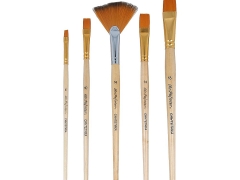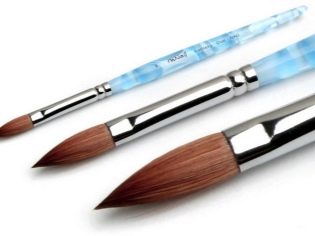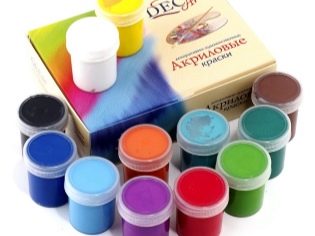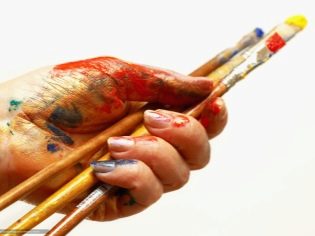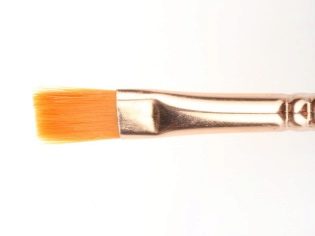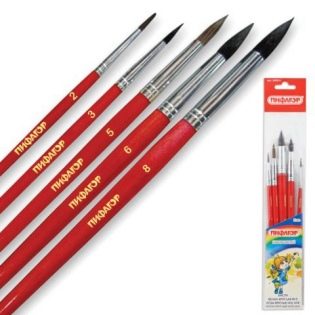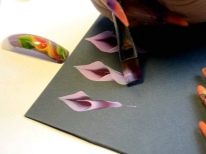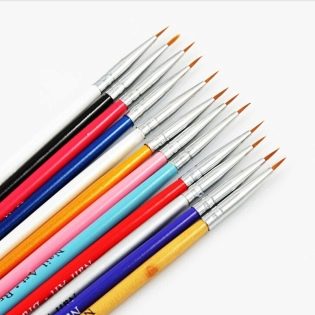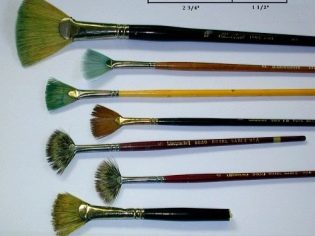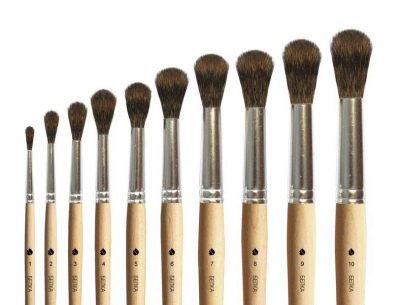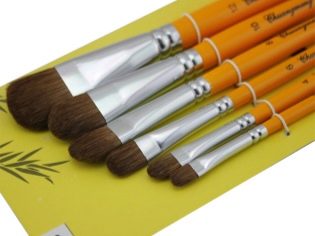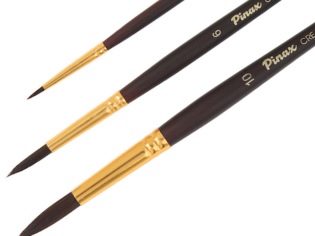Choosing a synthetic paint brush
For many newcomers to painting, the choice of a brush turns into a very primitive result in shape and size. It is important to know that synthetics, for example, are not suitable for watercolors and are hardly applicable to gouaches, but are more often used for working with acrylic paints, but in fact there are many more criteria for choosing a synthetic brush.
General provisions
Before choosing a brush to perform certain narrow tasks, you should learn to understand these tools in general. Hardly anyone wants his purchase to serve him just a couple of weeks, because, first of all, you should take care to choose a high-quality copy.
Do not even ignore the external parameters. You can start your search for the best tool by determining whether a brush is suitable for the length of the handle or not. If the tool is not convenient by this criterion, then all the others can not even be considered. If the length satisfies the requests, you should pay attention to the smoothness of the handle (mandatory), as well as assess the degree of reliability of the materials used.
It is very important to note the type of base - metal parts connecting the handle and the pile. It is logical that with an unreliable base, the pile will quickly fall apart, therefore preference should always be given to those brushes for painting, which are equipped with a solid base - without a seam.
On the quality of the pile is worth talking separately. First of all, it is unacceptable to purchase a tool in which glue, which fastens the hairs of the pile, is visible from the outside, otherwise it is better not to wash the tool at all, which, of course, is impossible. In addition, the pile must be elastic to perfectly convey the movement of the master's hand in the pattern. The store is unlikely to check this, but a good copy of the pile should still not lose shape when wet, and also keep as long as possible without falling out during work.
Pile Form
Another important point that influences the choice of artistic brushes is the shape of the pile. The convenience of drawing certain details depends on it, whereas people familiar with drawing only at the secondary school level would begin to wonder for a long time how to draw so many elements of different shapes and sizes with one brush of a standard form. The most common brushes of several common types.
- Round pile - the most common, it is precisely those that usually draw those who cannot choose an artistic tool. In principle, with relatively small sizes, it is convenient both for drawing details, and for painting areas, but in both cases it is better to give preference to narrow-profile solutions.
- Flat brushes also quite common. Their pile has a flattened shape, so that this brush is very similar to a paint brush. This similarity is not accidental, because both tools are designed for the same purpose - as quickly and conveniently paint over large areas. As a rule, the end of such a brush is slightly sharpened and in shape resembles a cat's tongue, which allows you to more accurately adjust the thickness of the stroke, depending on the pressing force.
- Flautz - this is a kind of analogue of a flat brush, only with the end of the pile in the form of a flat line. The thickness of the brush stroke is not adjustable here, but if you need the maximum width, this brush will be ideal.
- When looking at font brush it seems that the producer regretted the pile for it, but in fact, here you need a small amount of hairs with their considerable length.Such a tool is no longer needed for drawing, but for calligraphy, because they can easily put even a small dot, not to mention drawing the thinnest lines.
- Linear instances they resemble the previous brush, but their pile is a bit more voluminous and noticeably shorter. Professional artists usually write out small details with the help of this tool, because due to the shortened hairs, the highest degree of control over the shape of the picture is achieved.
- Fan brushes They very much resemble their flat counterparts, but, as is clear from the nave, they have a pronounced fan shape. This solution allows you to play as subtly as possible with hue transitions, and also to create clear color contrasts.
As a rule, each artist has his own preferences regarding favorite subjects, but even a fan will not have enough of one brush. For this reason, it is worth buying a set consisting of tools of different shapes in order to be able to draw the most subtle outlines, and quickly paint over a half-sheet in one shade.
Numbering
Often you can find the classification of artistic brushes also by numbers, which can puzzle an ignorant person. In fact, there is nothing difficult in this - as a rule, the number means the pile diameter of a round brush or its width in the case of any other shape. Thus, brush number 1 is a round brush with a pile with a diameter of 1 mm. This diameter is measured in the place where the pile is covered by the cap.
It should be noted that flat brushes are usually only pair numbers, because the compression of the base usually leads to a doubling of the width of the pile. Nevertheless, it is not necessary to speak about high accuracy of measurements on such scales, therefore the actual size of the pile often does not correspond to the indicated number. Moreover, with the same number, but different manufacturers and lint material, the result obtained by allegedly identical brushes can vary greatly.
Any artist needs brushes of various sizes, from the smallest ones, including # 0, to large ones - No. 16 or No. 20. Zero number should not be surprised - such a brush simply consists of only a few hairs and is intended for writing out the thinnest lines. The variety not only in form, but also in size makes artists acquire quite large sets of artistic tools, consisting of at least 5-6 pieces.
Manufacturers
The choice of an artistic brush is in many ways a subjective matter, since each creator has different needs. It may be that the artist, even among Chinese products, will find a tool that will satisfy him with his characteristics and quality. However, this is possible only in the case of a conscious choice, but if one chooses a novice, then he should first get an idea of how the highest quality should look.
The products of such brands as Erich Krause, Artberry or Pinax Creative will be able to correctly form the idea of a worthy choice.
On how to choose the right brush for painting, see the following video.
